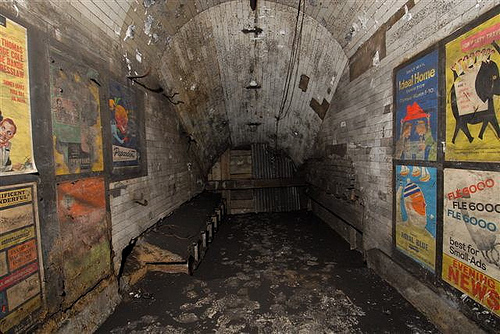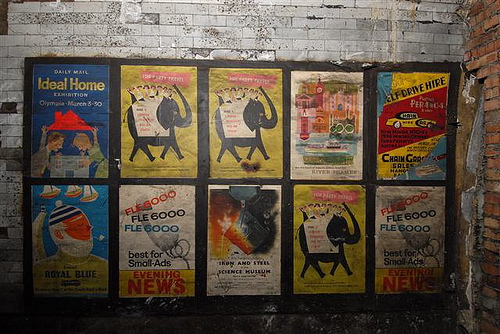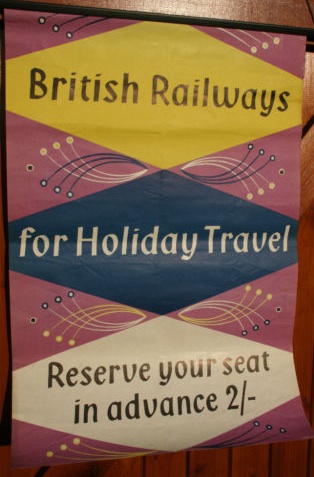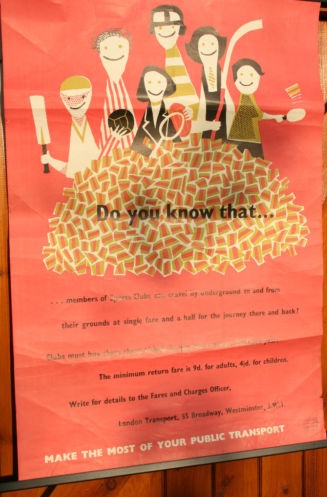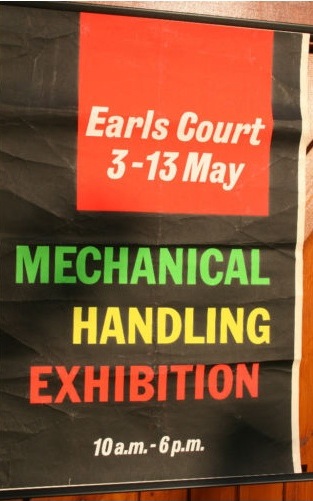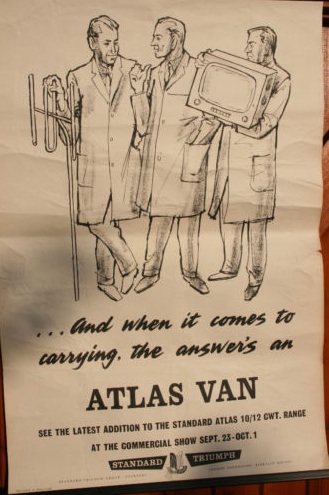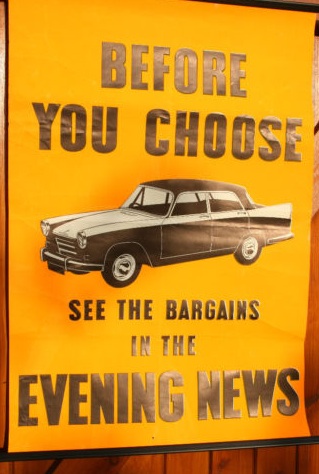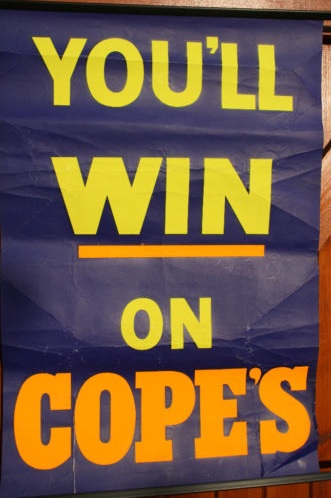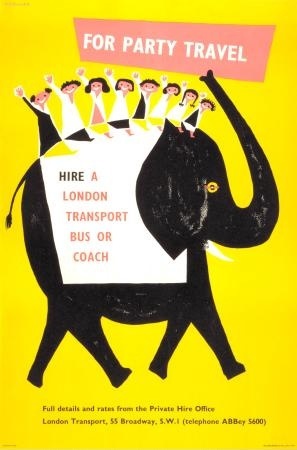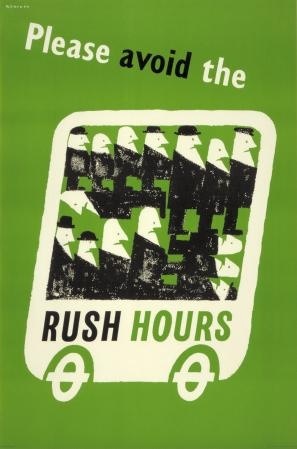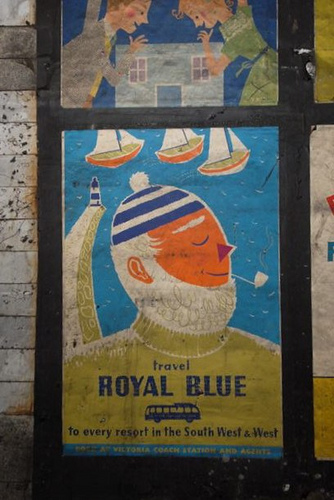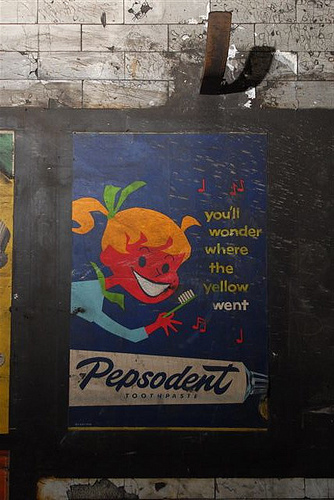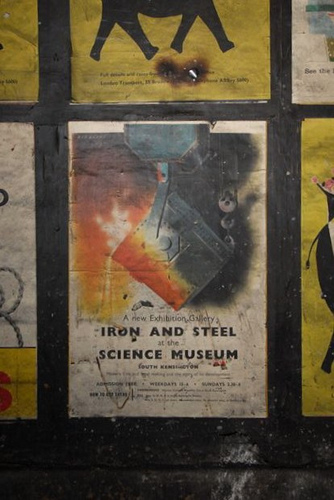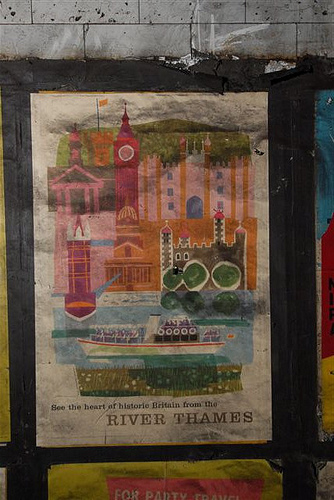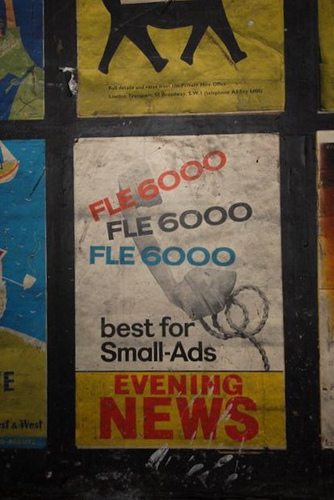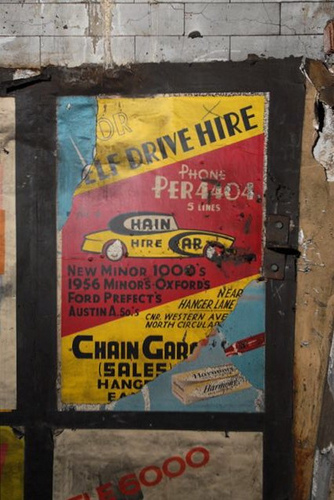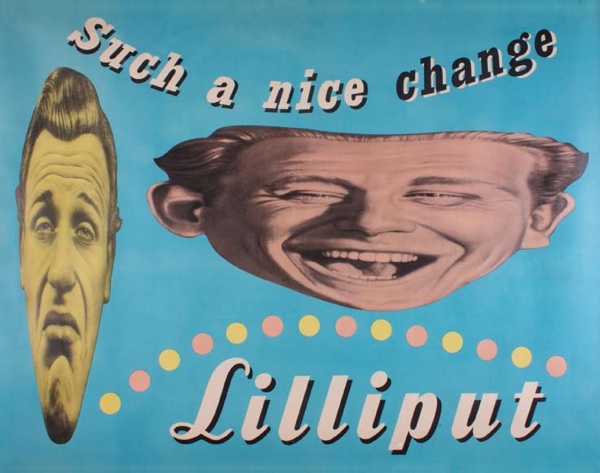Posters past
A while ago I posted, as did many other people, about the ghost posters of Notting Hill Gate, thanks to the wonderful photos taken by Mike Ashworth.
In the late 1950s, this tunnel, which ran between different lines at Notting Hill Gate tube station, was replaced by escalators and sealed up. What remained there for more than 60 years was a fantastic set of posters, a glimpse into what was really being advertised at the time.
What’s particularly fascinating is that they’re not all good. Of course there are some classics like Daphne Padden’s poster for Royal Blue coaches, but some of them are frankly quite average. Dial FLE 5000 for the Evening News.
The reason I’m reminding you about this is that a similar set of posters – only this time not stuck to any walls – have just been sold on eBay. There are seven of them, and it really does look like the contents of a pile given to the poster hangers at the start of the day.
Once again, there are some lovely pieces of design – my favourite is probably this Victor Galbraith image.
The LT Museum dates that to 1959, and my guess is that they are all from about the same period.
So far, all so wonderful, but there are also some decidedly average ones.
Some which can only be described as looking like newspaper ads magnified.
Along with a couple which aren’t even that interesting.
I have no idea where the set have come from, but I’m going to ask, so if I find out more I will let you know.
But they’re not just interesting as a cross-section, they also tell me, at least, something new.
All of these posters are 20″ x 30″, so Double Crown size, which was the standard advertising format of the period (if you want a full explanation of imperial poster sizes, Tom Eckersley will be your guide) Which is what you’d probably expect, given that, just like today, all kinds of companies advertised on the Tube network.
But two of the posters are for institutions – British Railways and London Transport – who usually used the 40″ x 25″ Double Royal poster for their advertising. That’s the size that posters on railway stations and on the outside of Tube stations always were, and that’s the size that most railway and London Transport posters are when they survive – take a look at any auction if you don’t believe me.
Except here we have two posters, one for the railways and one for London Transport itself, which don’t fit that format and instead have been designed to sit amongst all the other commercial advertising. Which surprised me, as I’d never really thought that they ever produced posters in this format.
Of course it makes complete sense when you do think about it, especially for London Transport who must have printed at least some Double Crown posters just to fill in any gaps which appeared in their commercial advertising spaces. Victor Galbraith’s elephant is probably doing that job on the tunnel walls above.
And even a cursory search on his name in the London Transport Museum archives produces other designs in a Double Crown size too, so while they might have been uncommon, they weren’t entirely unusual. Here’s another one from 1959.
But that BR and London Transport produced these posters is also not surprising because this point, the late 1950s, is the final heyday of the poster. This was an advertising medium of such importance that even British Railways, with its own poster sites in its own poster sizes, couldn’t afford not to be part of it. This wouldn’t last though, within a few years commercial television would have ended the dominance of the poster forever.
My Victor Galbraith search also brings up this wonderful bird, who is a Double Royal this time.
I wonder how the decisions were made as to which posters were chosen for which sizes. That, like so many other things, is something to find out more about one of these days. Unless there’s someone out there who knows already.
